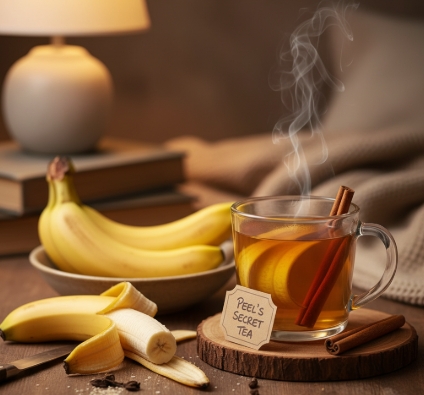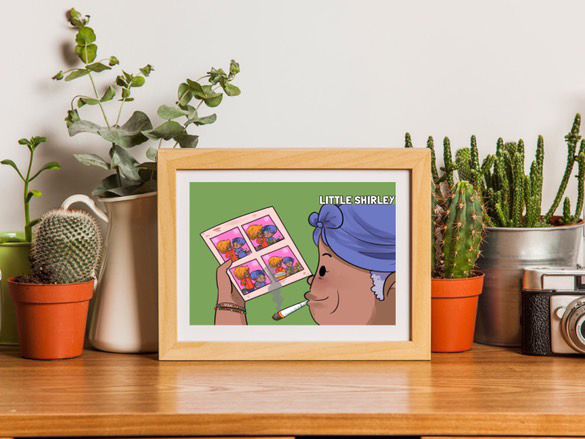
Hold on to your fruit bowls, folks, because we’re about to talk about something you usually toss without a second thought: the banana peel! While often considered kitchen waste in the modern world, whispers, traditions, and even recent scientific interest are suggesting that this humble skin might hold more power than we ever imagined – especially when brewed into a tea.
But does banana peel tea have an “ancient story”? Let’s unpeel the layers of history, folklore, and emerging wellness trends to find out!
The “Ancient” Allure: A Tale of Two Timelines
When we talk about “ancient” stories of remedies, we often picture scrolls from Egypt, texts from China, or indigenous practices passed down through generations. For banana peel tea, the narrative is a little more nuanced and, dare we say, a touch more modern in its widespread popularity.
While specific, well-documented ancient texts detailing “banana peel tea” as a widespread, defined remedy are rare in Western historical records, the concept of using all parts of a plant, especially nutrient-rich “waste” parts, is deeply ancient and universal.
- Global Ancestors: Many cultures, particularly in regions where bananas are indigenous or widely cultivated (Southeast Asia, parts of Africa, Latin America), have long understood the value of the entire plant. Banana leaves are used for cooking, wrapping, and medicine. The fruit itself is a staple. It’s highly probable that resourceful ancestors experimented with peels for various uses, including infusions for medicinal properties or nutritional supplementation, even if not explicitly labeled “tea” in the way we understand it today.
- Traditional Uses of the Peel (Beyond Tea): In some traditional medicine systems, banana peels have been used topically for skin ailments like warts, bug bites, and even acne, thanks to their reported anti-inflammatory and antiseptic properties. This demonstrates an inherent understanding of the peel’s bioactive compounds.
So, while we might not find definitive hieroglyphs depicting a pharaoh sipping banana peel tea, the spirit of utilizing this often-discarded resource for health absolutely echoes ancient principles of holistic living and waste-not, want-not resourcefulness. The “ancient story” of banana peel tea is perhaps more one of collective human ingenuity with plants, rather than a single, traceable origin story.
The Modern Comeback: Why Are We Brewing Peels Now?
Fast forward to today, and banana peel tea is having a moment! Its resurgence isn’t just about quirky wellness trends; it’s backed by a growing interest in its nutritional profile and potential health benefits.
What’s in the Peel? (More Than You Think!):
It turns out that banana peels are surprisingly rich in:
- Potassium & Magnesium: Electrolytes crucial for heart health, muscle function, and relaxation.
- Tryptophan: An amino acid precursor to serotonin and melatonin, neurotransmitters essential for mood regulation and sleep.
- Antioxidants: Compounds like polyphenols and carotenoids, which fight free radical damage.
- Fiber: Good for digestive health.
The Sip of Serenity: Modern Benefits of Banana Peel Tea
The most popular modern claims for banana peel tea often revolve around:
- Sleep Aid: This is the big one! Thanks to the magnesium and tryptophan, many people brew banana peel tea before bed, hoping to promote relaxation and deeper sleep. The warm liquid combined with these compounds can create a soothing bedtime ritual.
- Mood Booster: With its tryptophan content, it’s thought to potentially support serotonin levels, which are linked to mood stability.
- Antioxidant Boost: Drinking the tea is an easy way to ingest some of those protective antioxidants found in the peel.
- Digestive Support: The fiber (even if some is lost in brewing, some compounds remain) and other nutrients can contribute to gut health.
How to Brew Your Own “Ancient” Elixir (The Modern Way!)
Making banana peel tea is surprisingly simple:
- Choose Your Peel: Opt for organic bananas to avoid pesticides. The riper the banana, the sweeter the peel (and potentially higher in tryptophan).
- Clean It Well: Thoroughly wash the peel under running water, scrubbing gently.
- Prep: You can use the whole peel, or chop it into smaller pieces. Some people only use the ends, others the whole thing.
- Boil: Place the peel(s) in a small pot with 1-2 cups of water. Bring to a boil, then reduce heat and simmer for 10-15 minutes.
- Strain: Remove the peel.
- Sip: Pour the tea into a mug. You can add a dash of cinnamon, honey, or a squeeze of lemon for flavor.
So, while the ancient Egyptians might not have had “banana peel tea” on their papyrus menus, the wisdom of using every part of nature’s bounty for health certainly runs through our collective human story. Today, as we seek natural, sustainable ways to boost our well-being, the humble banana peel is finally getting its well-deserved moment in the spotlight – turning what was once trash into a treasure, one soothing sip at a time!




